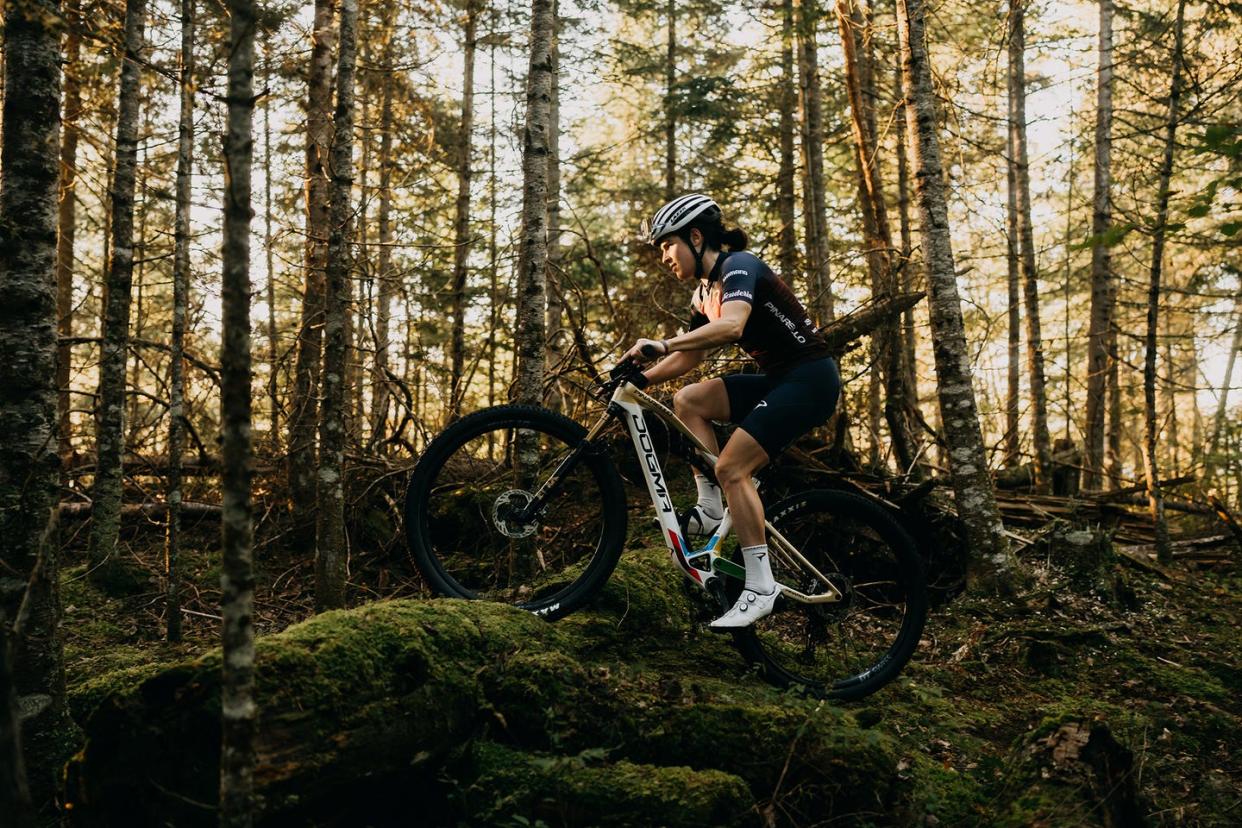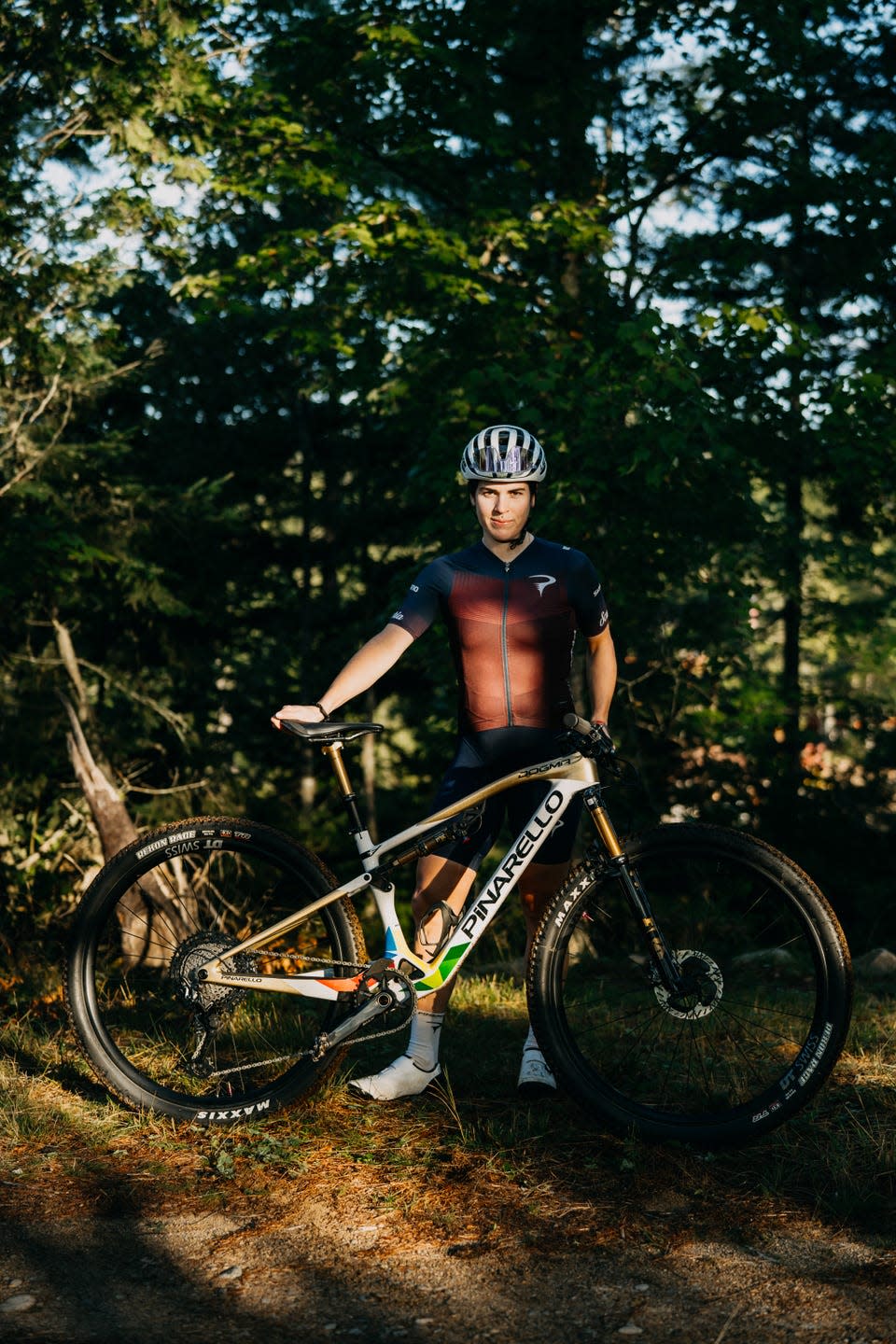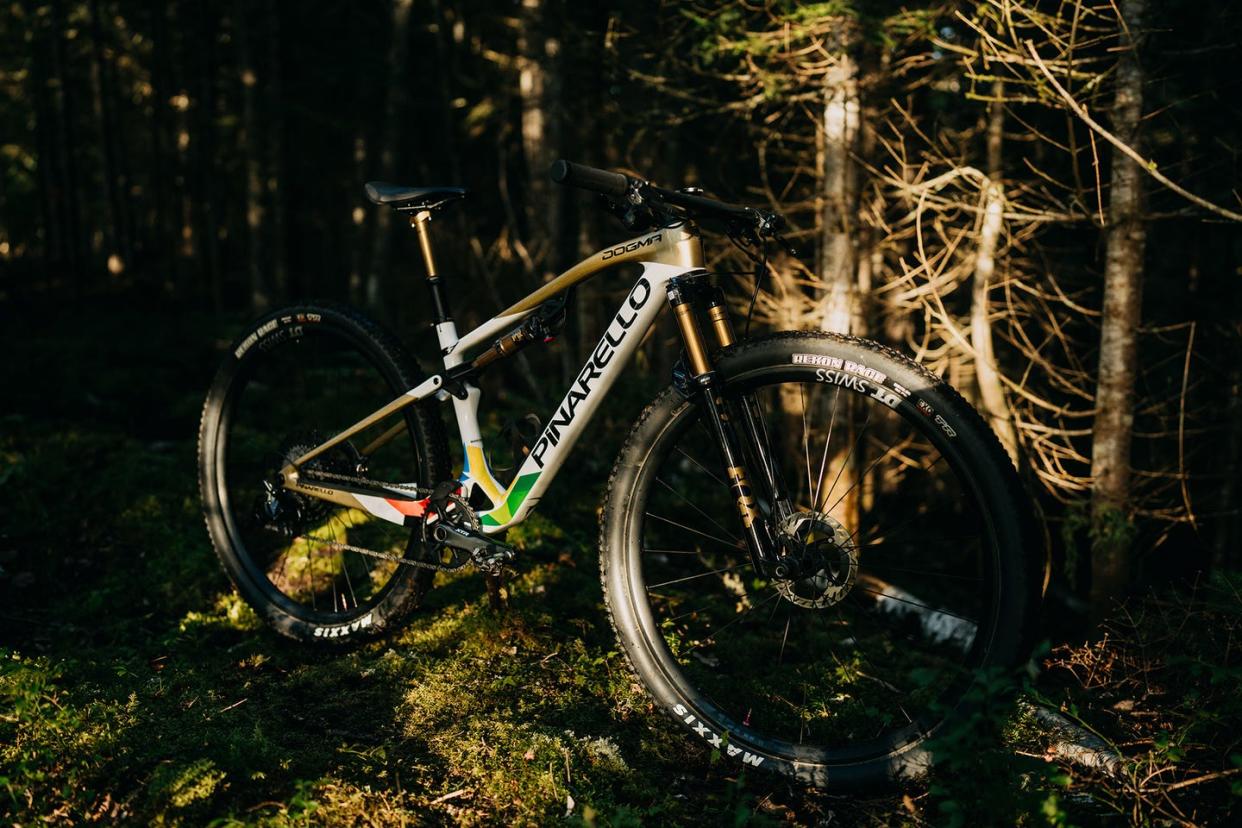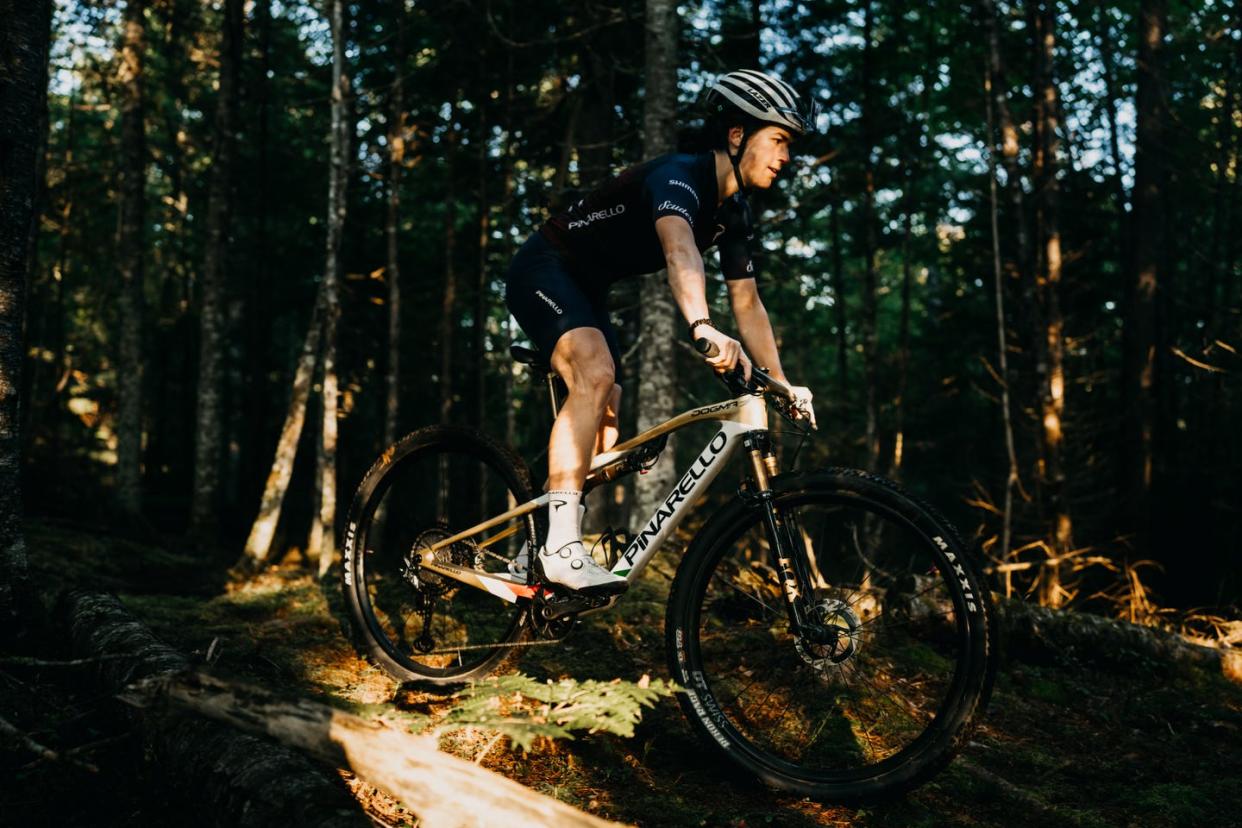From Slopes to Gravel Roads: Cecily Decker on the Innovative Pinarello Dogma XC

Social Media: @cecily_decker
Hometown: New Mexico, United States
Top Results: 1st BWR Kansas 2023, 5th BWR AZ 2023, 6th USA Cycling Gravel Nationals 2023, 5th Mid South Gravel 2024
Cecily Decker’s story is one of reinvention and a drive to compete. A former alpine ski racer for the U.S. National Team, Decker’s career was derailed by a devastating knee injury. Undeterred, she turned to cycling, a sport her mother had introduced her to years earlier, and quickly found her passion reignited. After leading Montana State University’s cycling club, Decker’s rise in the sport has been nothing short of impressive.
Now a member of Scuderia Pinarello and the first non-INEOS Grenadier rider to race on the Dogma XC, the 26-year-old is carving her own path in off-road cycling, recently placing 5th at Mid South Gravel. In this interview, she shares insights into her racing journey, her experience with the cutting-edge Pinarello Dogma XC, and what’s on the horizon for her season.
Bicycling: As a former skier, can you tell us how you got into cycling?
Cecily Decker: Sure! I started as a ski racer when I was about six years old, specifically in Alpine skiing. I eventually made the U.S. Ski Team and was focused on downhill and Super G. But in 2016 or 2017, I had a bad crash and tore everything in my knee. I spent about five years trying to come back but lost a lot of cartilage. I ended up skiing at Montana State University, but the school doctor eventually medically retired me.
During my recovery, I turned to cycling. I’d always ridden, but it became a big part of my rehab and how I coped with the end of my ski career, physically and mentally.
How did cycling become more competitive for you?
After I was medically retired from skiing in 2020, I took over the cycling club at Montana State, mostly just to find a group to ride with. That’s how I got into racing. I was riding road and mountain bikes, but in 2022, I got my first gravel bike and started doing gravel races.

Now that summer is wrapping up, where do you find yourself this season?
This year’s been good. I’m in the Life Time Grand Prix and so my season started in March. Outside of the series, I’ve had a really good season that started with Mid South, where I placed fifth, then I won The Rift, and recently I podiumed at SBT GRVL. I’ve had some bad luck in the Grand Prix races, but I hope to carry my momentum into the remaining events like Chequamegon MTB.
What was your first gravel race and what kind of courses do you most enjoy?
My first gravel race was Rebecca’s Private Idaho in 2022. I did the stage race version, which I enjoyed. It gave me the chance to improve day after day instead of it being over in just one day.
I really like races in the 100- to 130-mile range, especially when there’s technical terrain to help me separate myself from the field.
Do you think your skiing background helps with your racing, particularly when descending?
Definitely! I feel very comfortable at high speeds, probably even more comfortable than my skill level allowed when I first started racing. Now, descending on technical terrain is one of my strengths.
You’re racing on the Scuderia Pinarello team now. How has that experience been?
It’s a unique team. We all do different things—my teammate Ethan Overson and I race, but we also have Mari Holden, who’s a legend and does a lot with the USA Cycling Foundation. Everyone has their projects, which gives me the freedom to pursue a schedule that suits me. It’s inspiring to see everyone putting so much effort into their own paths.
Speaking of your team, you’ll be racing on the new Pinarello Dogma XC, right?
Yeah, I’m excited about that! I’ll be riding the Pinarello Dogma XC, which is special because it was developed with riders Tom Pidcock and Pauline Ferrand-Prevot, who both won world titles on it. I’m the first non-INEOS rider to race this bike, so it’s a big deal. It’s an incredible bike, and I look forward to seeing how it performs in races.

How does the Pinarello Dogma XC compare to other mountain bikes you’ve ridden?
The Dogma XC is incredibly responsive and handles technical sections with precision. Its lightweight frame and geometry stand out compared to other bikes I’ve ridden, especially on tough climbs. It feels like it was built for both power and finesse, and you can feel the difference when you’re pushing the limits.
What has been your favorite feature of the Dogma XC so far?
The suspension is probably my favorite feature. It’s just the right balance between firmness and give, allowing me to maintain control on rocky descents while keeping speed. The stiffness in the frame also makes a big difference when accelerating out of corners or powering uphill.
How has riding the Dogma XC impacted your racing strategy?
The bike’s responsiveness allows me to be more aggressive, especially on technical trails. I’m able to push the bike harder without losing traction or control, which has given me more confidence in sections I might have previously approached more cautiously. The bike’s geometry also helps me keep a more aerodynamic position when racing, which can really add up over a long race.
How does being the first non-INEOS Grenadiers rider to race the Dogma XC feel?
It’s a huge honor. INEOS is such a prestigious team, and knowing that riders like Pidcock and Ferrand-Prévot had input in developing this bike is pretty special. I feel like I’m part of something innovative and cutting-edge, which motivates me even more to perform at my best.
How does the bike perform in the varied terrain of the Life Time Grand Prix series?
The Dogma XC handles the range of terrains we see in the Grand Prix well. From technical singletrack to gravel roads, the bike adapts with ease. The lightweight build is great for the climbs, and the suspension helps smooth out the rougher sections. Overall, it gives me a lot of confidence across different types of terrain.
What was the learning curve like when transitioning to the Dogma XC?
Honestly, the transition was pretty smooth. Pinarello did a great job designing a bike that feels intuitive. Of course, I had to adjust to some of the more technical aspects, like fine-tuning the suspension and dialing in the fit, but after that, it just clicked.
How does the Dogma XC’s design influence your technical riding?
The frame geometry allows for a more aggressive stance, which helps in tight, technical sections. I feel like I can take sharper turns without losing balance. It’s also lighter, so when I need to maneuver through rocky terrain or make quick decisions, the bike responds faster.
What feedback do you think contributed most from riders like Pidcock and Ferrand-Prévot?
Their input, especially from their experience at the highest levels of racing, clearly shows how the bike handles under extreme conditions. I imagine they pushed for that perfect balance between weight, stiffness, and control. Their success on the bike in 2023 and 2024 speaks for itself, and it’s clear that their insights made the Dogma XC what it is.
Do you have any specific goals for the rest of the season?
I don’t have set goals for races. I’m just focused on doing my best in each race and taking it one day at a time.

You Might Also Like
